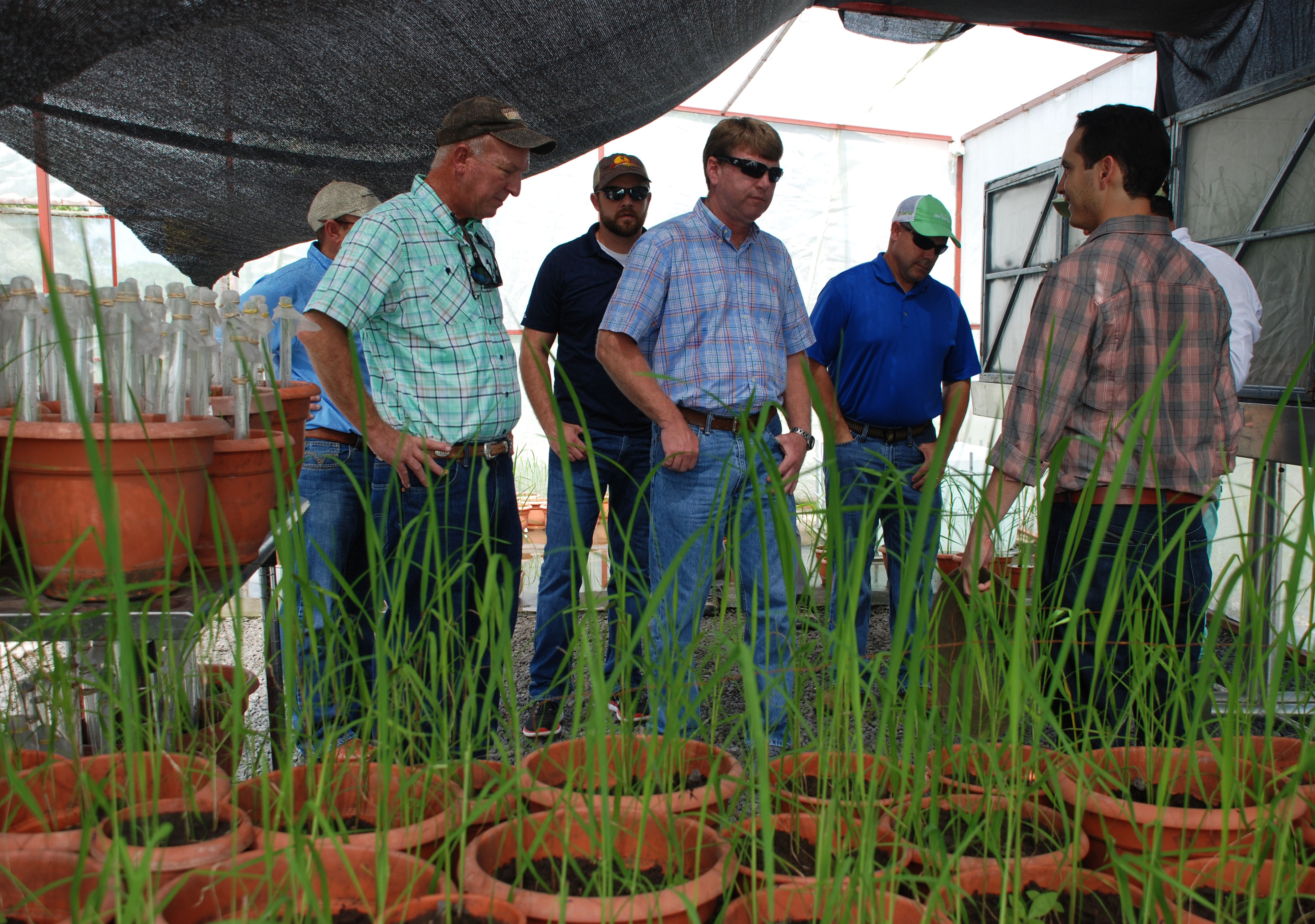 Agricorp research station on Lake Nicaragua
Agricorp research station on Lake Nicaragua
Nov 28, 2017
NICARAGUA & COLOMBIA -- Earlier this month, the 2017 International Rice Leadership Class visited several rice production operations, processing facilities, and public and private research stations in both countries. During the week-long trip, class members also met with senior officials from Proarroz, the national rice organization in Nicaragua, and Fedearroz, the national rice organization in Colombia.
Members of this year's International Rice Leadership Class are alumni from previous Rice Leadership Development classes and include: Jonathan Hobbs, New Orleans, LA; Mike Martin, Bernie, MO; Christian Richard, Kaplan, LA; Tim Walker, Memphis, TN; and Fred Zaunbrecher, Duson, LA.
The first stop was in Nicaragua where we visited two large, private rice farms, both working through their second harvest of the year. Tropical climates in this region allow planting of back-to-back successive rice crops, although the two full-term growing seasons differ greatly in sunlight and rainfall, making it challenging for local farmers to breed and plant varieties that flourish in both environments.
“The farms we toured in Nicaragua were amazingly self-sufficient,” said Mike Martin. “They did their own research on varieties, fertilization, and chemicals. Also, due to the fact that labor is economical and plentiful, production practices there included utilization of many small machines and manual labor for much of the cultivation and harvesting of the crop.”
The quality of rice produced in Nicaragua is very important to consumers there who demand low chalk and high amylose. At one time, Nicaragua was a 100,000 MT market for the U.S. industry, but due to quality and preference concerns, demand diminished to zero and has slowly climbed back to 4,000 MT.
After a tour of Agricorp, a modern dryer/mill facility in Chinandega, the class had dinner with the company’s CEO, Amilcar Ybarra-Rojas, and talked about the quality of imported rice from the United States. Ybarra-Rojas said he hoped to buy more rice from the U.S., but that it needed to meet the same low chalk standards of his brand varieties.
“It was heartening to hear that Nicaragua has not completely abandoned the possibility of buying U.S.-grown rice,” said Tim Walker. “Approximately 5,000 tons of identity preserved, pure-line rice was shipped to Agricorp in the winter of 2017 and a minimum of 10,000 tons of the same will be sent within a month or so. Mr. Ybarra-Rojas told our group he hopes the day is soon where he buys 150,000 tons of rice produced in the United States.”
Colombia’s rice farms are situated in fertile valleys at 1,500-2,000 feet above sea level. Much like Nicaragua, Colombia’s climate and environmental conditions allow for agricultural diversity including grains, fruits, coffee, and cattle. And also like Nicaragua, their roads make it arduous for farmers to get their crops to market.
“What caught my attention right away was the system the farmers there used to irrigate their crops,” said Christian Richard. “Most of the water used to flood the fields comes down from the mountains through man-made canals using gravity. The idea of capturing this water, holding it, and using it on fields further downstream was very important, so much so that the first farm we saw had just constructed an on-farm reservoir to hold rain water and runoff as a source of water for future rice crops.”
In Colombia, the group also toured newly constructed research and processing facilities and an irrigation project, all funded with TRQ funds made available by the U.S. Colombian Free Trade Agreement (FTA). Innovative use of these funds for research, production, processing, and marketing, has allowed them to develop and expand the rice market extensively.
As Fred Zaunbrecher explains, “Nearly 60 million dollars has been recognized by each partner in the Colombia FTA. The United States has dedicated their share to an investment in research and Colombia has elected to use theirs for improvement to their rice industry infrastructure.”
Fedearroz, a private company made up of 700 employees, hosted a tour of their rice seed farm, their rice seed processing plant near Villavicencio, and their rice mill located in Casanare. Like Agricorp in Nicaragua, Fedearroz is vertically integrated, taking rice from the seed, farm, and mill, to their own stores for retail sales.
“Fedearroz does everything -- rice research, breeding, seed production and distribution, member-farming-incentivizing, drying, milling, and retail marketing,” said Jonathan Hobbs. “Their research and breeding center was new and impressive, as was their seed production plant. Their new mill was not huge, but it was by far the nicest and most modern mill I have ever seen.”
The class met a local husband/wife team who farmed about forty five minutes from the mill and they asked many questions about U.S. government lending programs, subsidy programs, and even import taxes on equipment. As Richard said, “Even though we work a couple thousand miles apart, our day to day struggles were very similar.”
“I was very impressed by how warmly we were welcomed, and the hospitality and openness extended by the people of Nicaragua and Colombia,” said Martin. “Programs like this help keep the channels of communication open for progress in the future. The contacts that were made on this trip, and the relationships built in a short amount of time, makes me hopeful that our countries will continue to work together for the mutual benefit of the entire rice industry.”
The Rice Leadership Development Program is sponsored by John Deere Company, American Commodity Company, and RiceTec, Inc. through a grant to The Rice Foundation and is managed by USA Rice.